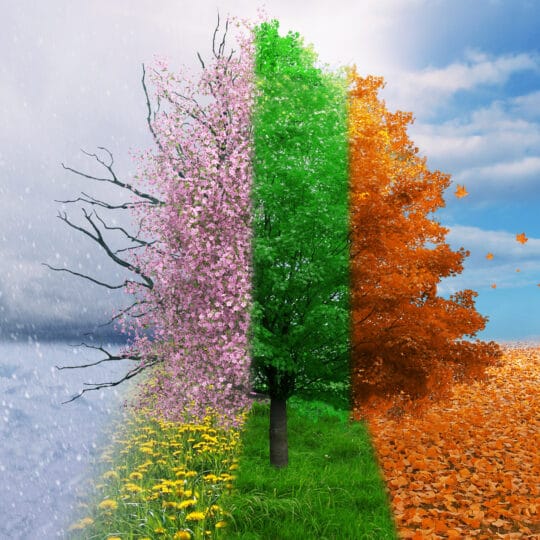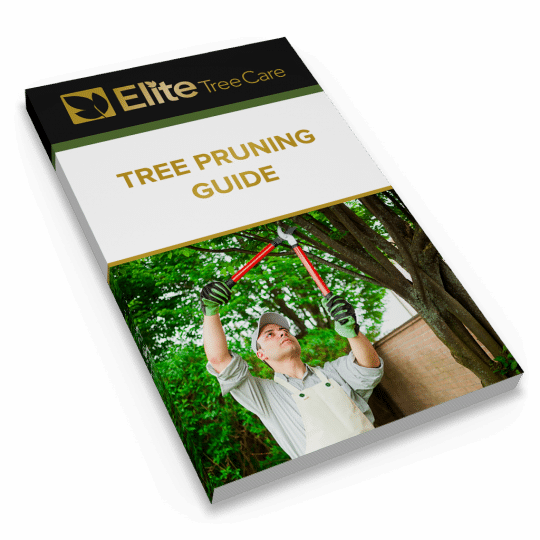When is the Right Time to Prune?
A Seasonal Timetable for Different Trees
Posted
May 14, 2020

Just as the seasons change, so does the tree pruning timetable. Depending on the type of tree or shrub, there’s a better month to prune and shape the plant for optimal growth, blooms, or fruit. While you want to remove any dead or dangerous dangling branches at any time of year, follow the timeline below for more tree pruning tips.
Tree Pruning Timetable by Month
January:
- Prune any branches damaged by winter storms
- shade trees (oak, hickory, sycamore) are dormant during this time, so it’s best for pruning.
- heavily prune trees with sap (birch, maple, elm) in the coldest part of the year when it’s dormant. Light pruning can be done toward the middle or end of summer.
February:
- prune and train fruit trees (apple, pear, cherry); regular maintenance at the proper time helps produce more fruit.
- shape summer flowering shrubs (butterfly bush, rose of Sharon, flowering hydrangeas)
- trim ornamental grasses before spring growth begins
- prune overgrown broadleaf shrubs (boxwood, holly) to the desired size, but don’t prune more than one-third of the growth
- remove any excess evergreen growth
March:
- prune roses before new spring growth begins
- prune spring-flowering shrubs (forsythia, lilac) immediately after flowering
- cut oldest shrub limbs near ground level to help rejuvenate growth
April:
- lightly prune azaleas after flowering
- remove any remaining winter damage from trees and shrubs
- prune berry shrubs (holly) while flowering to help prevent removing all berries
- prune spring flowering trees immediately after blooming
May:
- prune rhododendron after flowering
- trim the top of hedges (holly/boxwood) so it’s narrower than the bottom
June:
- shape narrow-leaf evergreens (hemlock, juniper, arborvitae) to their desired size
- only trim green growth on conifers; any brown wood will not regenerate
- for white pines, only trim the growth from April
- prune gardenia immediately after bloom
- remove old flowers from perennials (phlox, shasta daisy, purple coneflower) to encourage re-bloom.
- pinch out growth tips on chrysanthemums to make bushier plants
- prune hydrangea while flowering or immediately after
- remove water sprouts on fruit trees
July/August:
- lightly prune “bleeder” sap trees
- only prune dogwood to regain natural shape
- prune roses and fertilize for fall flowering
- prune hedges as needed; remember to keep bottom branches wider than the top.
- prune out the wood that bore fruit on blackberry and raspberry bushes
September/October:
- prune any plants that need dead wood removed or damage repaired
- stay away from most shrubs or trees in late summer or early autumn, since pruning stimulates new growth. Anything that starts growing now may not have time to harden off before frost.
November/December:
- clean up fallen leaves
- remove any underbrush
- prune berry producers (holly)
More Pruning Tips
There are some gray areas in the guidelines above. For instance, some pruning in late winter and early spring (the best time to prune) may result in removing flower buds. For more specific pruning techniques for the types of trees, shrubs, and plants in your yard and garden, contact Elite Tree Care.

Download Your FREE Tree Pruning Guide
Learn how, when, and how much to trim or prune your trees to maximize their health and beauty. This guide covers the factors that go into tree trimming (pruning) and will help you make a more informed decision about hiring a professional tree service.